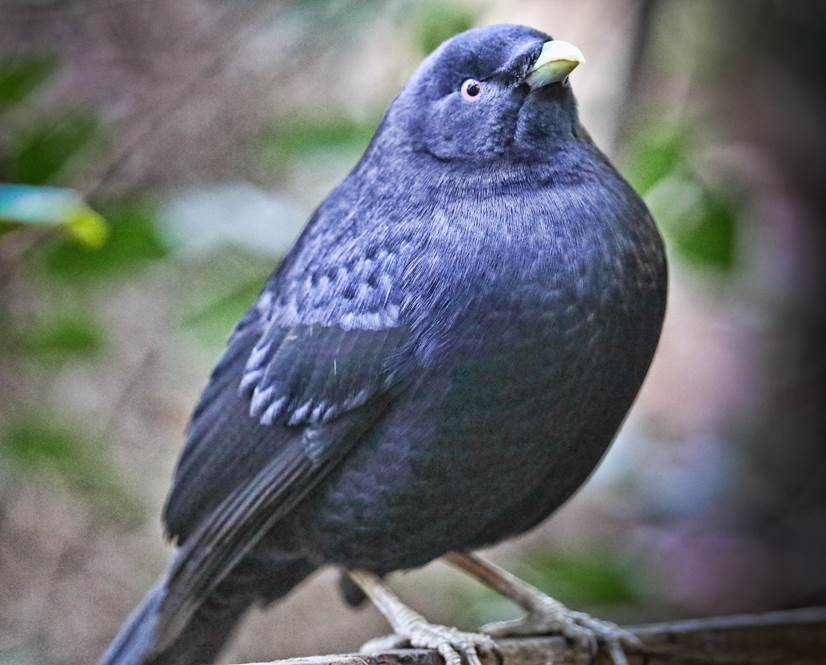Main resident of our (shorter, upper Narrabundah) camellia thicket, this morning

-----Original Message-----
From: Geoffrey Dabb <>
Sent: Wednesday, 25 July 2018 5:31 PM
To:
Subject: FW: [canberrabirds] Camellia and crimson rosella
Don't worry Elizabeth, I'll come down and measure it for you. We both know you have some very unusual plant specimens there. g
-----Original Message-----
From: Philip Veerman <m("pcug.org.au","pveerman");">>
Sent: Wednesday, 25 July 2018 4:58 PM
To: 'Elizabeth Compston' <m("grapevine.net.au","elizabethcompston");">>; 'Birds Canberra' <m("canberrabirds.org.au","canberrabirds");">>
Subject: RE: [canberrabirds] Camellia and crimson rosella
Large? 30–40 metres high is huge, like my blue gum. About ten times the usual height for a camellia (I have just checked a garden book I have.) I have a camellia in my yard, the usual about 2.5 metres high. It has been roughly the same
throughout my 32 years here. Flowers very well. I have never seen any birds in it. For what it is worth "desiccating" means drying out, so I don't think the birds are doing that.
Philip
-----Original Message-----
From: Elizabeth Compston [m("grapevine.net.au","elizabethcompston");">]
Sent: Wednesday, 25 July, 2018 2:23 PM
To: Birds Canberra
Subject: [canberrabirds] Camellia and crimson rosella
We have a large camellia, about 30–40 metres high and about 40 years old in our garden. It has flowered beautifully until the crimson rosellas decided that the buds were a tasty morsel. I am not sure whether they are desicating the
whole of the bud, or just the outer petals. Has anyone else had this problem? The birds are not touching any other camellias, which are not as tall or as old as the one that is in trouble.
A net would be a lot of trouble and not very attractive just outside the from door
Elizabeth Compston
*******************************************************************************************************
This is the email announcement and discussion list of the Canberra Ornithologists Group.
Emails posted to the list that exceed 200 kB in size, including attachments, will be rejected.
All emails distributed via the list are archived at
http://bioacoustics.cse.unsw.edu.au/archives/html/canberrabirds. It is a condition of list membership that you agree to your contributions being archived.
When subscribing or unsubscribing, please insert the word 'Subscribe' or 'Unsubscribe', as applicable, in the email's subject line.
List-Post: <m("canberrabirds.org.au","canberrabirds");">>
List-Help: <m("canberrabirds.org.au","canberrabirds-help");">>
List-Unsubscribe: <m("canberrabirds.org.au","canberrabirds-unsubscribe");">>
List-Subscribe: <m("canberrabirds.org.au","canberrabirds-subscribe");">>
List manager: David McDonald, email <m("canberrabirds.org.au","coglists-owner");">>
*******************************************************************************************************
This is the email announcement and discussion list of the Canberra Ornithologists Group.
Emails posted to the list that exceed 200 kB in size, including attachments, will be rejected.
All emails distributed via the list are archived at
http://bioacoustics.cse.unsw.edu.au/archives/html/canberrabirds. It is a condition of list membership that you agree to your contributions being archived.
When subscribing or unsubscribing, please insert the word 'Subscribe' or 'Unsubscribe', as applicable, in the email's subject line.
List-Post: <m("canberrabirds.org.au","canberrabirds");">>
List-Help: <m("canberrabirds.org.au","canberrabirds-help");">>
List-Unsubscribe: <m("canberrabirds.org.au","canberrabirds-unsubscribe");">>
List-Subscribe: <m("canberrabirds.org.au","canberrabirds-subscribe");">>
List manager: David McDonald, email <m("canberrabirds.org.au","coglists-owner");">>

